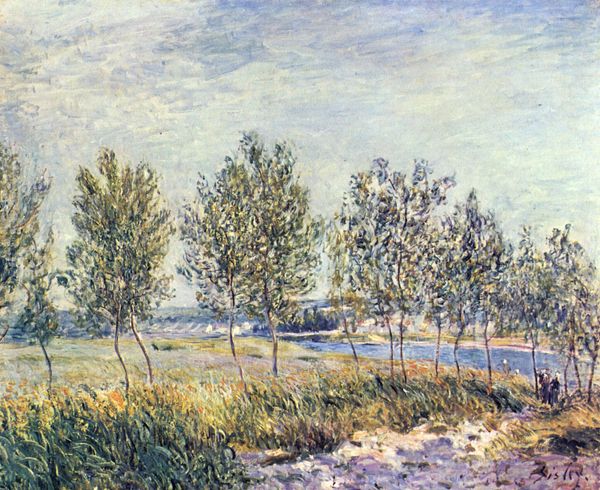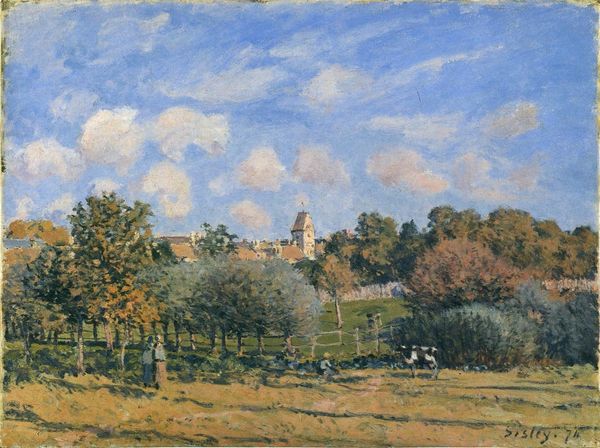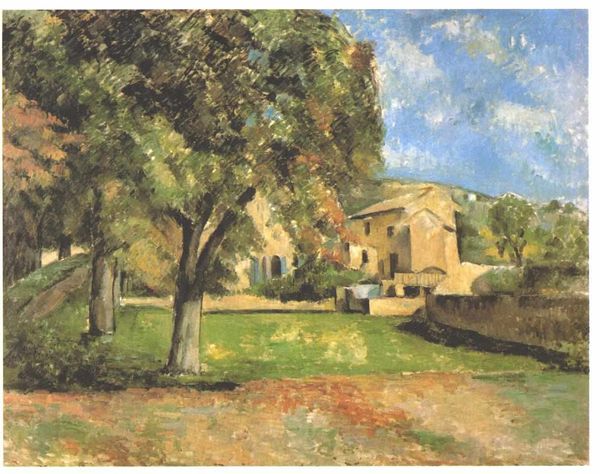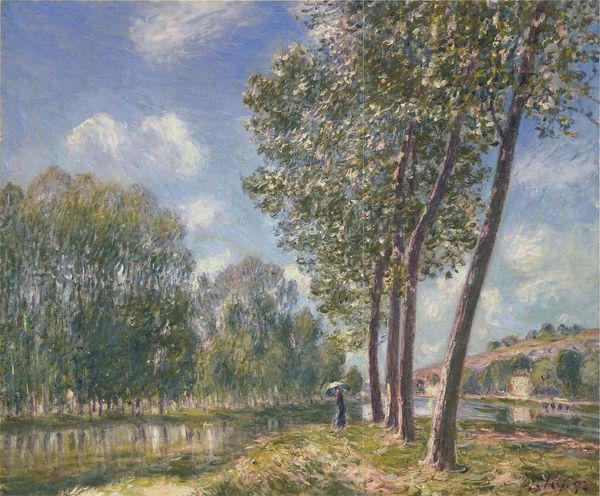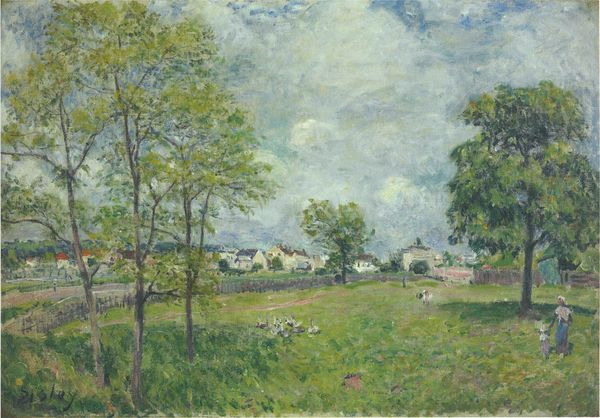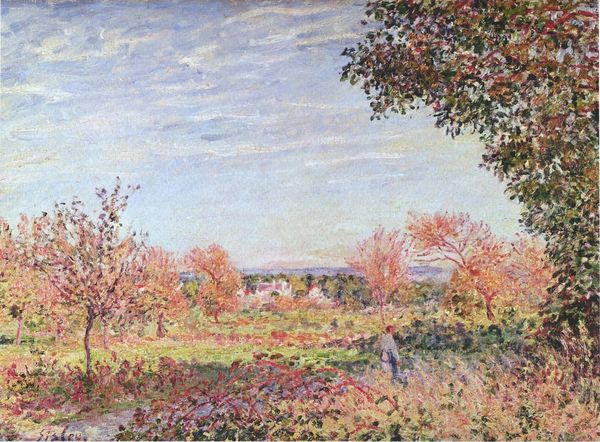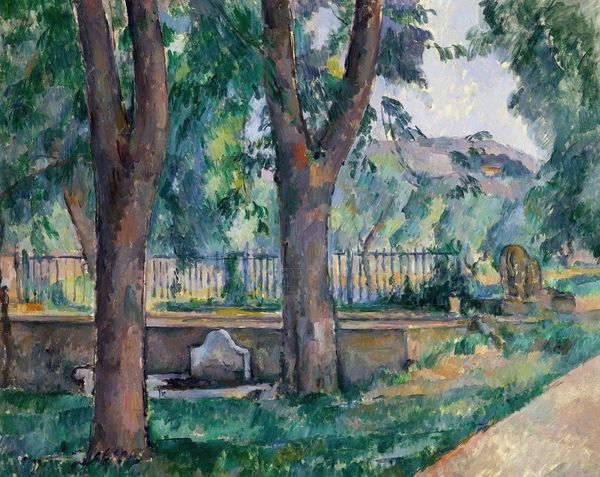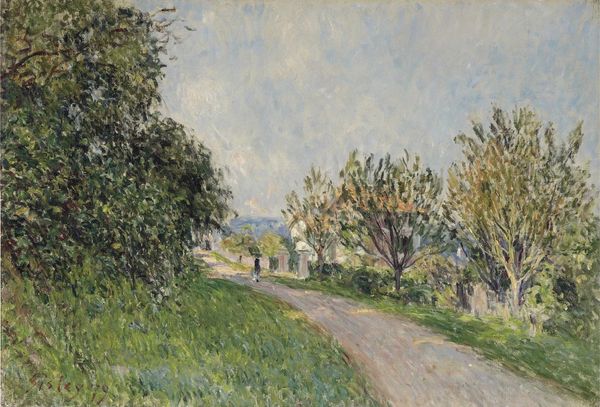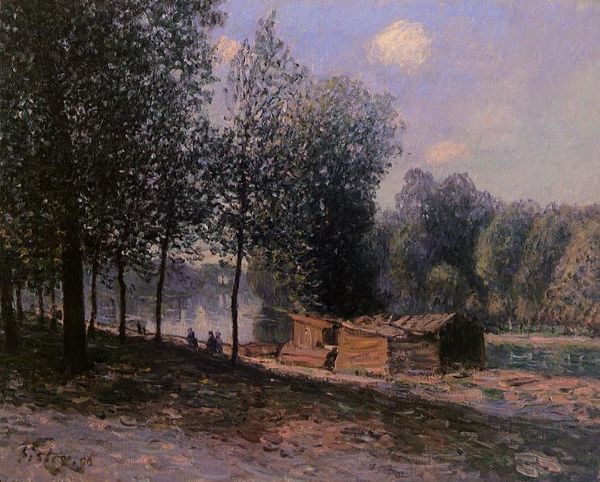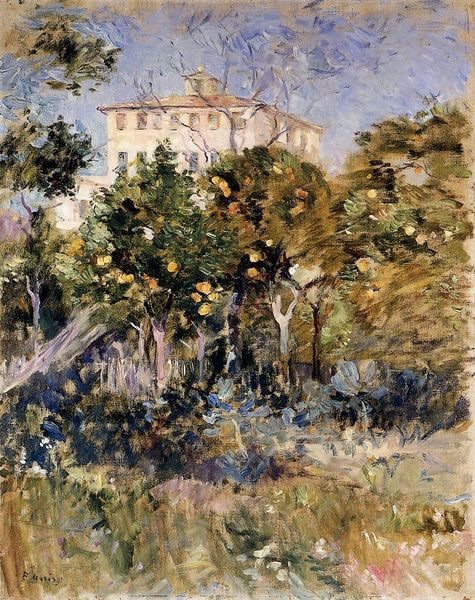
painting, plein-air, oil-paint
#
tree
#
painting
#
impressionism
#
impressionist painting style
#
plein-air
#
oil-paint
#
landscape
#
house
#
impressionist landscape
#
oil painting
#
cityscape
#
building
Dimensions: 46 x 61 cm
Copyright: Public domain
Curator: What a perfectly serene cityscape. The artist is Alfred Sisley, and this is "Bassin de Marly," painted in 1875. Editor: It has a delicate melancholy, wouldn't you agree? The subdued palette gives me a sense of longing or nostalgia. Curator: Absolutely. Sisley, influenced by the Impressionist movement, captured this scene en plein air. Note the way the light shimmers across the water's surface. It’s not just about recording the physical scene; it’s about capturing a transient moment, the very essence of light and atmosphere. Look at those autumn-toned trees… Editor: Right, but look at how that contrasts against the backdrop of sociopolitical changes in post-Franco-Prussian War France. Courbet once described landscape as historical, a materialization of sociopolitical conditions; is this painting then just an idyllic retreat or does it also signal societal yearning for pre-war tranquility, ignoring the burgeoning class struggles of the Third Republic? Curator: I understand your point, the historical context cannot be ignored, but in focusing only on sociopolitical interpretations, don't we risk overlooking the profound emotional impact this artwork has through the carefully considered arrangement of forms and color? The way he mirrored those tree silhouettes. There’s an order there; this evokes certain archetypes associated with harmony and nature. Editor: And is not "nature" in itself a construct? By turning to the motif of the natural, Sisley risks furthering an ideal of nationhood centered on unchanging "natural" symbols, thereby side-stepping contemporary debates that really defined the time. Curator: Maybe… or maybe this painter created simply a subjective sensory impression, an honest observation in the style of his contemporaries like Monet. Its beauty alone connects to something deep within us, reminding us of simple truths about the temporal nature of existence and human values in the face of large and powerful institutions. Editor: Perhaps it’s both, you know? It mirrors an individual subjective reaction to societal trauma – a seemingly straightforward visual impression imbued with complex undertones reflective of shifting cultural norms in post-revolution France. Curator: It is difficult not to think of that here today. Well, that has certainly given me a fresh perspective. Editor: Same. It's these layers that allow art to still provoke thought decades later.
Comments
No comments
Be the first to comment and join the conversation on the ultimate creative platform.
